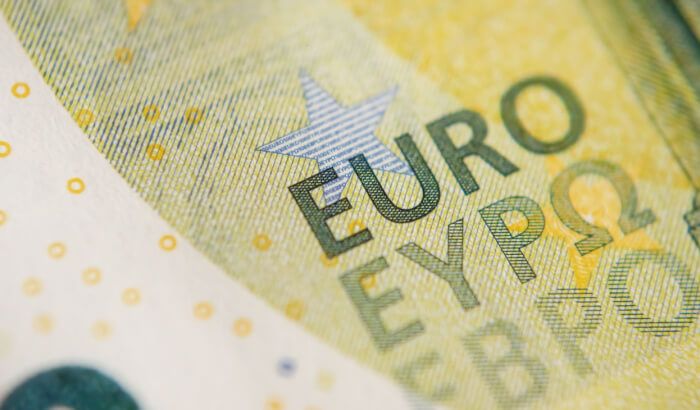
Friday Sep 22 2023 21:49

9 min

The euro (EUR/USD) continued its decline against the dollar on Friday, approaching the $1.06 level, which marked its lowest point since mid-March. The drop followed the release of disappointing Composite Purchasing Managers’ Index (PMI) data for the eurozone, as well as signals indicating that the European Central Bank (ECB) might halt its interest rate increases going forward.
In September, the Eurozone PMI showed a slight uptick from 46.7 to 47.1. While this result was better than anticipated, it still indicates contraction, and does not alleviate concerns about a potential drop in GDP during the second half of the year. Total new orders saw the biggest decline in nearly three years.
ING Senior Economist Bert Colijn commented on the new data:
"A recession is becoming increasingly clear in the euro area,” added Christoph Weil at Commerzbank. “Unlike in the winter half-year of 2022/23, the economic weakness is not concentrated in Germany, which has suffered particularly badly from high energy prices.”
Weil also noted that the increase in the ECB key interest rate by 450 basis points last week is slowing down the economy in all euro countries.
Even though two years of stringent global policy tightening might have reached its highest point, major central banks have indicated their intention to maintain interest rates at whatever level necessary to combat inflation. This stance is now having a noticeable impact, particularly in Germany, Europe’s largest economy, where diminishing business activity points to a contraction owing to a sustained decrease in demand for goods and services.
France's services sector experienced a more pronounced contraction in September, its PMI showed, as falls in both demand and new orders weighed on the Eurozone's second-largest economy.
Markets.com Chief Market Analyst Neil Wilson issued a short comment on the dynamics, stressing Germany’s low PMI reading:
A week after its decision, a group of policymakers at the European Central Bank has voiced concerns regarding the potential for another interest rate hike, adding further pressure to the euro forecast.
On Thursday, ECB policymaker Philip Lane suggested that companies were currently absorbing wage-related pressures, and there were signs of softening in the labor market. This indicated that the inflationary pressures stemming from wage hikes might finally be diminishing.
"The contribution of unit profits to annual inflation in the first half of 2023 has moderated relative to its contribution in 2022, suggesting that the rising wage pressures are starting to be absorbed by firms," Lane said in a speech in New York. "Price hikes coming in below the increase in unit labour costs are projected to contribute further to the required disinflation during 2024. The labour market has so far remained resilient despite the slowing economy but shows signs of losing momentum.”
Meanwhile, the U.S. Dollar index (USDX) rose above 105.5 on Friday — its highest level since early March — after the Federal Reserve (Fed) signaled that another rate hike still might be on the table. While the central bank maintained the target range for the federal funds rate at 5.25%-5.5%, the released projections in the dot-plot suggested the likelihood of one more rate increase later this year, followed by just two cuts in 2024. Some commentators called the move a “hawkish skip” rather a “hawkish pause”.
"This wasn't a 'pause,' it was a 'skip,'" Karl Schamotta, chief market strategist at Corpay in Toronto, told Reuters.
"With the economy performing better than expected and inflation pressures remaining persistent, Fed officials chose to maintain a hawkishly data-contingent bias in this afternoon's statement and dot plot," Schamotta said.
Following the Fed’s decision, ING’s Global Head of Markets Chris Turner wrote:
Analysts at Nordea added:
On September 22, Turner issued a bearish outlook for the EUR/USD pair:
ING’s EUR/USD forecast, updated today, now shows the euro to dollar rate trading at a potential $1.13 in the final quarter of 2023, before recovering to $1.16 in Q1 2024 and $1.14 in Q2 2024.
In their latest FX Snapshot on September 18, analysts at Citibank Hong Kong said:
Citi’s 3-month euro to dollar forecast was even more bearish than ING’s, placing the EUR/USD exchange rate at a potential average of $1.08, which could decline to $1.06 in 6 to 12 months’ time, according to the bank.
Citi’s long-term EUR forecast, however, was bullish, projecting the EUR/USD pair to recover and trade at a potential average of $1.20.
The EUR/USD forecast from Australian bank Westpac, last updated on September 22, saw the pair trading at $1.10 in December 2023, $1.11 in March 2024, and $1.12 in June 2024, indicating a sharp euro decline towards the end of the current year and a slow recovery into 2024 and 2025.
When considering foreign currency (forex) for trading and price predictions, remember that trading CFDs involves a significant degree of risk and could result in capital loss. Past performance is not indicative of any future results. This information is provided for informative purposes only and should not be construed to be investment advice.
